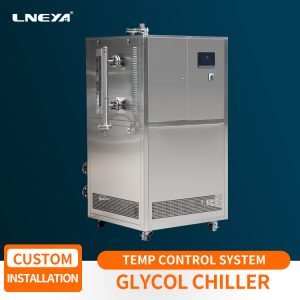New energy power car power battery detection system vacuum description
The new energy power vehicle power battery test checks the vacuum pump switch in the closed state before operation; when the vacuum pump is placed horizontally, ensure that the lubricating oil and the oil level line are kept horizontal; whether the sealing rubber pad is damaged; whether the pressure gauge needle is returned to zero. Place the vacuum pump on the indoor floor (safe, stable, and easy to operate). It is forbidden to be placed outdoors, and it is not allowed to be placed on the power battery test of new energy power vehicles. Combine the fluoridation tube, pressure gauge and vacuum pump, unscrew the nut at the fluorination port from the large valve, screw the fluorotube onto the fluoride port, and confirm whether the thimble is in the top position. (It is forbidden to tighten the joint with tools such as pliers). First open the pressure gauge valve, then open the vacuum pump power switch and start vacuuming.
Observe the pressure gauge (low pressure) when vacuuming. Stop the vacuum after the pressure reaches -0.1 MPa (negative pressure). The vacuuming time should be determined according to the size of the model and the vacuum pump. The reference time is 10 to 30 minutes, not less than 5 minutes. And should be based on the pressure value displayed on the pressure gauge. First close the pressure gauge valve and then turn off the vacuum pump power switch. Remove the fluorinated tube from the vacuum pump and tighten the air pump nozzle cap to prevent dust from entering. After vacuuming, the pressure must be checked after the pressure is maintained. The pressure is not more than -0.08MPa. If the pressure is greater than -0.08 MPa, the cause of the leak should be found. The pressure is not more than -0.08 MPa (a small amount of rebound with a pressure of 0.02 MPa is allowed). If the pressure is greater than -0.08 MPa, indicating that there is a leak, find the cause of the leak and repeat the above procedure after solving it.

The new energy power vehicle power battery test confirms that there is no leak point and then opens the small valve spool. When the pressure (low pressure) reaches 0.1 MPa-0.5 MPa, the small valve is closed. When the pressure gauge pointer does not move, the pressure gauge valve should be opened a little to see if there is gas discharge. If there is no gas discharge, the fluorine tube is not connected with the valve. The thimble of the fluorine tube does not open the top core of the valve. . At this point, the vacuuming operation should be repeated (starting from the fourth step). After confirming the end of the pumping operation, quickly remove the fluoridation tube and pressure gauge, and then re-open the small valve and turn it back half a turn. After fully opening the large valve and turning a half turn, immediately tighten the valve back cover nut to prevent the valve core rubber seal from leaking and tighten the nut.
The vacuum state of the new energy power vehicle power battery test has a certain impact on its operation, so we need to avoid these external factors that affect the new energy power car power battery detection system.
Verwandte Empfehlungen
-
How To Choose The Screw Type Water-Cooled Chiller
1237Compared with the similar chillers, the screw type water-cooled chiller has many advantages. We as one of the top chiller manufacturers share you more. 1. The temperature of the heat conducting liquid can be adjusted to any temperature you want, a...
Details anzeigen -
Temperaturbeschreibung der Glykol-Kühlmaschine
1004Für Benutzer und Freunde ist es notwendig, ein tiefes Verständnis der Glykol-Kühlmaschinen vor dem Gebrauch zu haben. Es wird empfohlen, die Temperatur in verschiedenen Geräten wie Kühlsystem, Verdampfungstemperatur, Verflüssigungstemperatur usw. zu kennen...
Details anzeigen -
Which equipment does a chemical plant use a heating circulator to heat?
1212In chemical plants, heating circulators are widely used to heat a variety of key equipment and devices to ensure that chemical reactions and processes are carried out under suitable temperature conditions. The following are some of the mai...
Details anzeigen -
Welche Wartungsarbeiten sind bei Glykol-Kaltwassersätzen im täglichen Betrieb erforderlich?
1183Im täglichen Betrieb der Glykolkältemaschine verringert sich die Kühlwirkung, wenn die Wartung nicht durchgeführt wird. Um die Betriebseffizienz zu verbessern, empfehlen wir Ihnen daher, die notwendigen täglichen Wartungsarbeiten durchzuführen. Kältem...
Details anzeigen
 LNEYA Industriekühler Hersteller Lieferant
LNEYA Industriekühler Hersteller Lieferant












